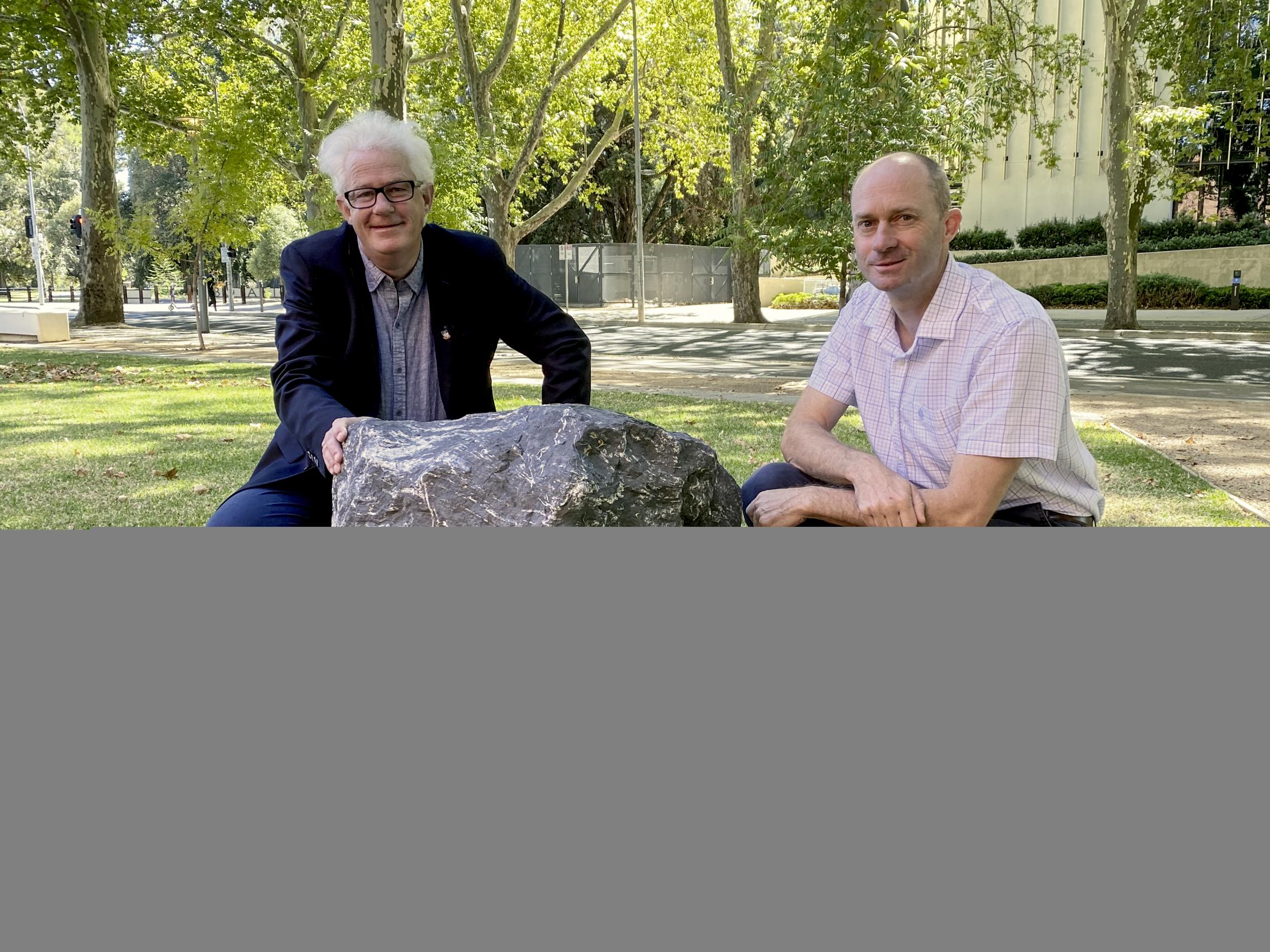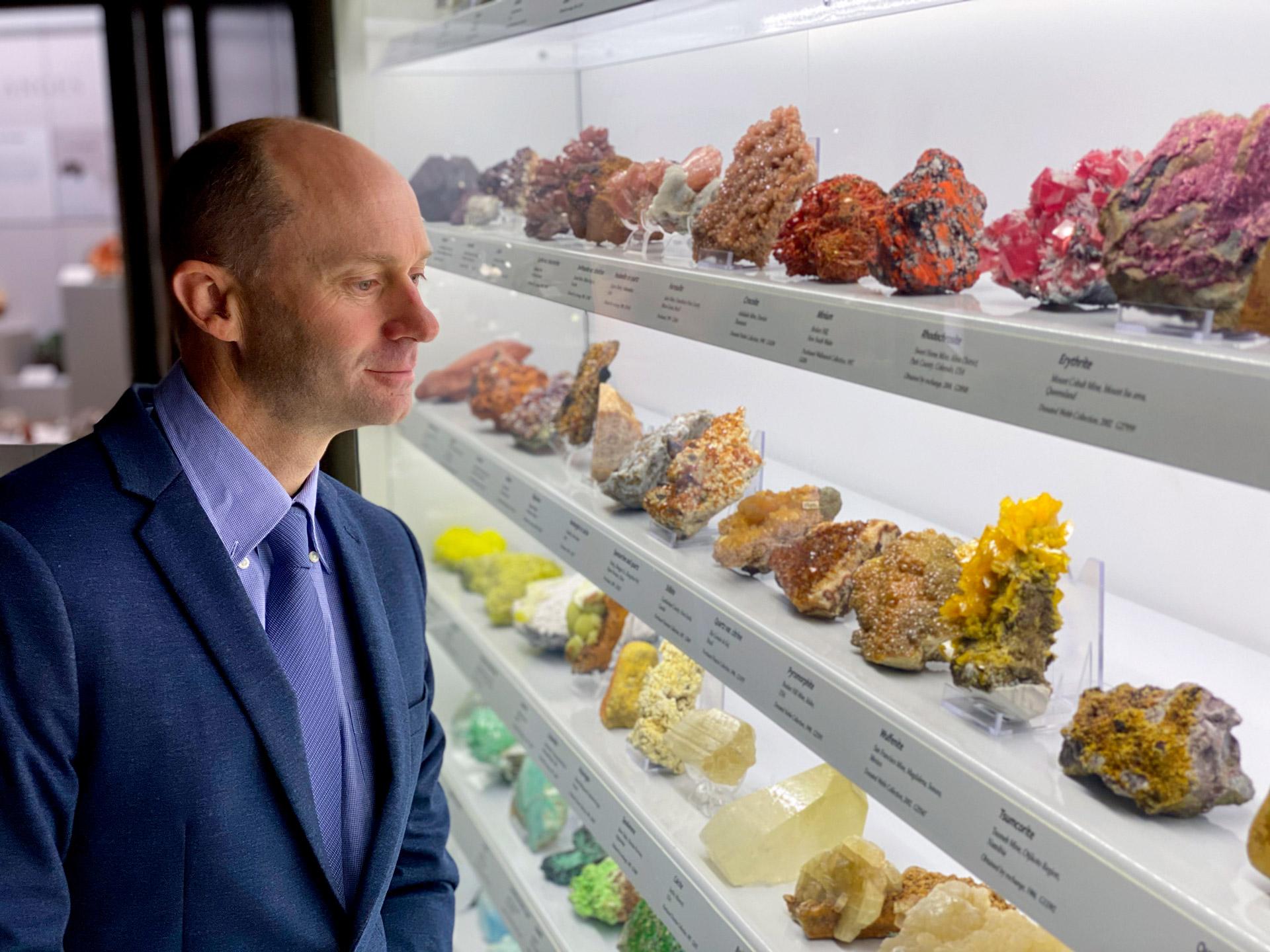New research centre with a critical mass of talent and expertise
Ongoing and secure supply of critical minerals is essential to the transition to a high-tech and clean energy world.
Launched on Thursday 11 March, the University of Adelaide’s Australian Critical Minerals Research Centre will carry out multidisciplinary research in the discovery and extraction of critical minerals to benefit society.

The new research centre's Deputy Director Professor Nigel Cook; and Director, Associate Professor Carl Spandler.
“The Australian Critical Minerals Research Centre will conduct comprehensive critical minerals research, from exploration to resource definition and mineral processing,” said the University of Adelaide’s Associate Professor Carl Spandler who is Director of the Centre.
“It is the only centre of its kind in Australia, and one of only a few worldwide.
“Our research aims to increase Australia’s sovereign supply of critical minerals, including how they are found, refined and manufactured, how they occur as byproducts in other deposits, and how they can be separated from non-target elements.”
Critical minerals include elements such as cobalt, lithium, and rare earth elements, as well as more familiar metals such as copper and nickel, which are considered vital for the economic well-being of the world’s major and emerging economies. They are needed for high-tech equipment such as turbines, motors, solar panels and batteries for energy generation and storage. It is largely non-geological factors that determine their criticality.
The University of Adelaide is one of Australia's most research-intensive institutions.
“With its critical mass of world-class researchers, the Australian Critical Minerals Research Centre is ideally positioned to lead ethical, environmentally responsible work to help achieve Australia’s strategic aim to more fully utilise its abundance of critical minerals for the benefit of our local and global communities,” said Professor Peter Hoj, Vice-Chancellor and President of the University of Adelaide.
“The University of Adelaide has the talent and ambition to cover end-to-end critical minerals research and education, and is equipped to work with industry and government in discovering and developing Australia’s critical mineral resources.”
Australia has many well-known critical minerals deposits, and has highly prospective geology for additional discoveries, and hence has the potential to become a major global supplier of critical metals in the future.
Associate Professor Spandler of the School of Physical Sciences was recruited by the University to its ‘Top Talent’ program in early 2020 as part of its ambition to elevate its research performance in multiple fields that have tangible outputs of global significance.

“Any natural resource can become critical when its supply is at risk, whether it be due to geology, geopolitics, economics, or social and environmental issues,” says Associate Professor Spandler.
“The Australian Critical Minerals Research Centre will bring the breadth of research needed to help secure Australia’s critical mineral resources into the future.”
Drawing expertise from, and strengthening collaboration between, the University’s Faculty of Sciences and the Faculty of Engineering, Computer and Mathematical Sciences, the centre is hosted by the Institute for Mineral and Energy Resources (IMER).
The Centre is in partnership with the South Australian Museum, which will enable access to the Museum’s world-class mineral collections. It will also collaborate with the Australian minerals industry and mining equipment, technology and services companies, within the framework of current projects targeting the entire minerals value chain from greenfields exploration to end-products.
